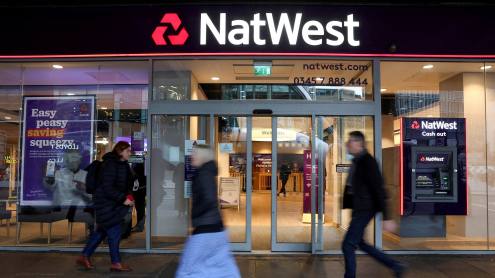This follows an agreement between the Fed and the Securities Exchange Commission in the first week of July, which resulted in extended Fed scrutiny over investment banks following the collapse of Bear Stearns.
US Congress has been called to vote on a housing market rescue bill to give the two lenders, known as government-sponsored enterprises, temporary access to unlimited cheap capital, in the form of government loans or equity investments.
Goldman Sachs analysts believe the government plan will not help the firms’ shareholders and have repeated their recommendation to investors to sell the shares. Goldman has said that common shareholder equity may be diluted if the US Treasury decides it is necessary to buy equity in the two entities, depending on the terms of the deal. The investment bank has also said that the government’s plans do not address the worrying credit issues in Fannie and Freddie’s combined $5300bn mortgage books. It believes the most recent data suggests deterioration beyond Goldman’s pessimistic expectations – which resulted in widened loss estimates of $32bn for Fannie, increased by 28% since the last forecast; and $21bn for Freddie, a 31% increase.
The mortgage lenders have been criticised for paying generous dividends to shareholders and high compensation to management during buoyant times, rather than building up capital against difficult future market conditions.
Merrill write-downs
Merrill Lynch has announced larger-than-expected write-downs of $9.4bn. The US bank waited until the market closed to report a $4.6bn loss in the second quarter and announce asset sales aimed at raising $8bn in capital. JPMorgan, however, has beaten market expectations, unveiling $2bn second-quarter profits despite a spike in mortgage and other loan defaults.
Alternative equities trading platform Turquoise has shelved plans to open 15 minutes before Europe’s leading exchanges amid “fear mongering” by rivals such as Deutsche Börse and the London Stock Exchange. Lehman Brothers was the last bank to join the platform. A few days earlier, the bank had announced a joint venture with the LSE to develop the exchange’s first dark pool.
The Qatar Investment Authority has become Barclays’ largest investor, with about 6%, after less than one-fifth of the bank’s existing shareholders participated in its £4.5bn ($9bn) capital-raising issue. Other investors in the pre-placement included Japan’s Sumitomo Mitsui Financial Group, which owns 2.1%, and Temasek, which has raised its interest from 2% to between 2.5% and 3%. Challenger, an investment vehicle controlled by the family of the Qatari prime minister, would own almost 2%. China Development Bank retains its stake of roughly 3%.
RBS rules out BoC sale
Despite its capital difficulties, Royal Bank of Scotland has ruled out any sale of its stake in Bank of China, and intends the latter to press ahead with a two-pronged Chinese expansion strategy, according to one of RBS’s senior executives. The value of RBS’s 5% stake in BoC has trebled to £2.4bn since it made the investment in 2005, fuelling speculation that RBS could sell out and focus on expanding the Chinese operations of ABN AMRO, the Dutch lender it acquired last year as part of a break-up bid.
National Australia Bank is in discussions with RBS to acquire the Australian and New Zealand arms of ABN AMRO, worth an estimated A$800 ($772m). Australia’s big banks are looking to diversify their income streams as home-loan growth slows and wholesale funding costs rise.
China Construction Bank has announced it will launch private banking services aimed at clients with liquid financial assets exceeding Rmb10m ($1.47m) in the country’s four most affluent areas: Beijing, Shanghai, Guangdong Province and Shenzhen. Bank of China was the first Chinese-funded bank to provide such services, from March last year. Foreign banks involved in this business include Citibank and Standard Chartered.
TOP 1000 WORLD BANKS UPDATE
The Top 1000 World Banks listing in The Banker’s July issue contained the following errors:
- Bank Pasargad: The Iranian bank’s annual figures for 2007 and 2008 were inadvertently transposed by The Banker, leading to incorrect negative growth. The Tier 1 capital at March 19, 2008 should have been $791m, not $483m, placing it at about 536 in the listing, not at 705 as was shown.
- Bank Saderat Iran: The bank sent in revised figures. The audited Tier 1 capital at March 20, 2007 was revised to $3635m from $888m, placing it at about 183 in the global ranking and top in Iran, instead of 491 in the ranking.
- China CITIC Bank: The figures used were incorrectly provided by the bank. The Tier 1 capital at end-2007 should have been $11,217m, instead of the $5344m shown, placing it at about 77 in the listing, instead of 138 (see Big Four less dominant as smaller players rise).
- EN Bank: The Iranian bank’s figures were significantly understated because of an exchange rate miscalculation, which excluded it from the listing by mistake. Tier 1 capital should have been shown at $366m, placing the bank at about 814 in the listing.
- Gulf International Bank: The bank’s figures were overstated due to an exchange rate miscalculation. Tier 1 capital should have been $2381.6m, instead of $6334m, placing it about 246 in the listing, instead of 126.






